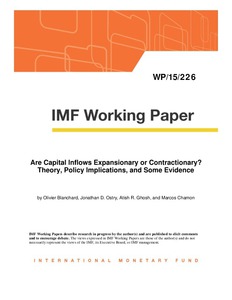Are capital inflows expansionary or contractionary? Theory, policy implications, and some evidence
"The workhorse open-economy macro model suggests that capital inflows are contractionary because they appreciate the currency and reduce net exports. Emerging market policy makers however believe that inflows lead to credit booms and rising output, and the evidence appears to go their way. To r...
| Main Authors: | , , , |
|---|---|
| Institution: | ETUI-European Trade Union Institute |
| Format: | TEXT |
| Language: | English |
| Published: |
Washington, DC
2015
IMF |
| Subjects: | |
| Online Access: | https://www.labourline.org/KENTIKA-19109358124919275309-are-capital-inflows-expansiona.htm |
| Summary: | "The workhorse open-economy macro model suggests that capital inflows are contractionary because they appreciate the currency and reduce net exports. Emerging market policy makers however believe that inflows lead to credit booms and rising output, and the evidence appears to go their way. To reconcile theory and reality, we extend the set of assets included in the Mundell-Fleming model to include both bonds and non-bonds. At a given policy rate, inflows may decrease the rate on non-bonds, reducing the cost of financial intermediation, potentially offsetting the contractionary impact of appreciation. We explore the implications theoretically and empirically, and find support for the key predictions in the data." |
|---|---|
| Physical Description: | 24 p. Digital |

